#american experience
Text

Hey babe, let’s get coffee at the combo Dunkin- urgent-care!
#Americana#vibes vibes vibes#American experience#capitalism#I guess that tag is relevant#You can go get tested for Covid#Then walk next door and get a coffee and a donut
547 notes
·
View notes
Photo
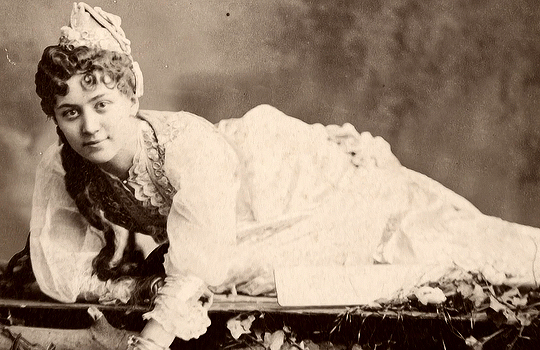

American Experience: The Gilded Age (2018)
81 notes
·
View notes
Text
in a costco
heard a scream
everything’s just as it seems
19 notes
·
View notes
Text
Mapping Gilded Age New York
The Gilded Age was a study in contrasts. Immigrants arrived in New York City with little to nothing in their pockets, while just uptown some of the richest men and women in America built mansions that resembled European palaces. As more and more people carved out their homes on the island at the end of the 19th century, different ideas about what New York was and who belonged there emerged. American Experience spoke to Jack Tchen, Associate Professor at NYU’s Gallatin School of Individualized Study, about the way race and class tensions played out against the vibrant, dynamic landscape of New York City in the Gilded Age
— By Jack Tchen | American Experience | Published: February 2018 | November 04, 2023

J. W. Williams, Root & Tinker/Library of Congress
1. The Spine
Leading up to and during the Gilded Age, New York City begins to define itself along its spine, the middle of the city, rather than by its shoreline. The wealthy are gravitating away from the shoreline, which is seen as rougher and more dangerous. If you have money, you’re afraid that the workers in your counting house or your factory are going be jealous. You want to find other people who have money. And Fifth Avenue becomes the place where you find them. From Bowling Green to Washington Square Park, from Washington Square Park to Madison Park, and from Madison Park up to Central Park and 57th Street — this becomes what wealthy white Anglo-American Protestants feel is their New York. They feel that the greatest wealth of the city and of the nation is being generated and being expressed along this spine. The global branding of Fifth Avenue really emerges at a moment in which the Fifth Avenue merchants come together and say, “We have to protect Fifth Avenue. Fifth Avenue is ours and to maintain our identity, we have to keep out all the new immigrants who are trying to make money, who are setting up garment factories.” They begin to re-territorialize what had been a neighborhood of small producers, and to claim a kind of ascendancy and superiority.

Charles Pollock/Library of Congress
2. Metropolitan Opera House - Broadway and 39th Street
The building of the Metropolitan Opera House in 1883 is a great example of how cultural capital actually works. Did the people who went to the Met love opera? Probably not. In some ways, this was an emulation of European culture, especially Italian culture — but in Italy, opera was actually a mass activity that people from all stations of life loved. In the new world, it was transformed into this rarified art that supposedly only elites could understand. It was stilted in terms of performance, especially in comparison to the more popular forms of theater. And it was in a foreign language.
But the building was important. The box seats were important. Who was sponsoring the performances was important. So in a sense, supporting the opera became the perfect vehicle for elites to outdo each other.

Ernest Marx/Library of Congress
3. Vanderbilt House — 1 West 57th Street in New York City
Alva Vanderbilt was the driving force behind the “Petite Chateau” Vanderbilt mansion, which was completed in 1883. It was built of limestone, in contrast to neighboring brownstones, in the style of a French Renaissance palace. Her housewarming party was one for the ages. Twelve-hundred guests attended. Their costumes were sheer excess and outré; one woman, Miss Kate Strong (nicknamed “Puss”), wore a taxidermied cat head and seven cat’s tails decorating her skirt. By today’s dollars, the party was said to cost $6 million—one quarter of which went to the finest champagne.
What’s really important here is to acknowledge the role of women in the wealth-building process itself. Because it’s not just wealth building in terms of actual dollars — it’s also wealth building in terms of status. And women are the ones who know how to build that kind of social and cultural capital that gives their families the standing and prestige that other families of wealth will begin to recognize and accept.
In some ways, the women who are leading these families and creating these parties are like the ad men on Madison Avenue. They’re branding the family. They’re making the public — other elites especially — appreciative of why they belong and why they should be recognized widely. So when Alva Vanderbilt builds her mansion, she’s being very creative, very thoughtful, and very tenacious in trying to establish that profile of the Vanderbilt family.

Petite Chateau, Library of Congress
4. Seventh Regiment Armory - 640 Park Ave., Bet. East 66th & East 67th
The street grid of New York City means that people of great wealth are cheek-to-jowl next to people living in extreme poverty. That sense of injustice and the divide between the wealthy and the poor is palpable.
The Gilded Age was a fractious time, and amidst growing wealth and opulence, a sense of desperation and resentment emerged. I think the wealthy felt some anxiety at the thought that at some point that tension would erupt.
So they built armories to defend against riots and protests. The armories housed volunteer regiments — the precursor of the National Guard. The Seventh Regiment, also known as the “Silk Stocking” or “Blue-Bloods” regiment, was a who’s who of the Gilded Age elite. It was first headquartered on the Lower East Side — but it moved uptown as the wealth of the city did. The armory now on Park Avenue opened its doors in 1880.
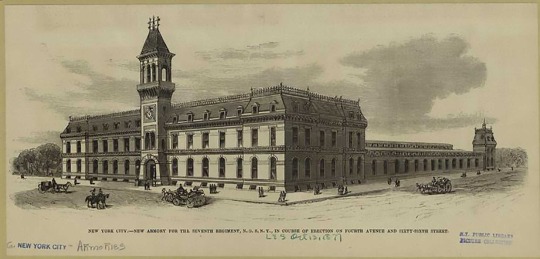
The New York Public Library
5. Harbor
New York Harbor was deep enough that it didn’t freeze over, so it could actually operate year-round. Lots of raw products — grains, sugars from the Caribbean — can all be exchanged in this deep-water port and then processed and sent by way of the Erie Canal into the heartland, and also traded across the Atlantic. So New York becomes kind of a central economic exchange hub, feeding and processing so much of what is being consumed by the growing middle classes of North America, and Europe.

Currier & Ives/Library of Congress
6. Orchard Street
As the wealthy Protestant elite move uptown, away from the waterfront, the lower east side becomes a neighborhood of immigrants. Jewish and Italian immigration really starts in great numbers in the latter part of the 19th century. Millions of people are coming to New York. They’re dazzled by visions of streets of gold.
The older tenements on the lower east side become jam-packed. The whole notion of a middle class apartment with one person in a room — that didn’t exist. A single apartment could house multiple extended family members; a family might even rent out a room to make ends meet. The idea of how you used space was different. The streets were really an extension of where you lived.
Take the market on Orchard Street. It was really an American reproduction of the small market towns that many Jews had left in eastern Europe. If you look at old photos, you can just imagine the sounds and smells. Jews, Italians, and Chinese are living side by side. And out of that, a port culture begins to emerge. People are bringing the cultures that they left. Lots of languages are being spoken, and lots of new dishes and new fashions are being created. It’s all part of this new, intermingled culture. And that intermingling, I think, is what’s distinctive to New York City — as opposed to the culture of the uptown elites, who are really emulating their fantasy of the european aristocracy.
The uptown elites, by the way, are really scared of this new, intermingled port culture. They have a certain notion of Protestant destiny in terms of who this country properly belongs to. They’re concerned with who’s creating value — monetary, but also the cultural value of the nation. Meanwhile, these non-Protestants of suspect racial origin keep coming into the city. So there’s a growing guardedness of who should count, who belongs there.
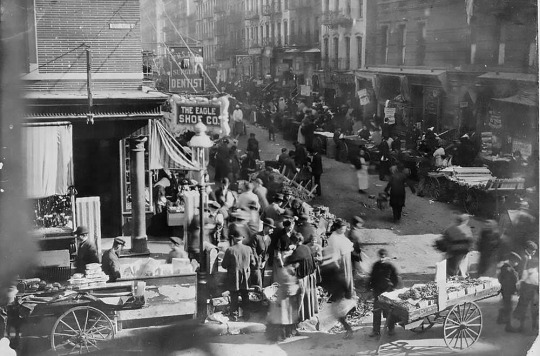
Bain News Service/Library of Congress
7. Bowery
While the elites are walking up and down Broadway, checking each other out in a way that prefigures the shopping mall or the arcade, immigrants and members of the white working class hang out on the Bowery. It’s where people go for dime museums, tattoo parlors, bars; all that kind of popular culture that we tend to think of now as connected to Coney Island originates on the Bowery.
These new immigrant and working class audiences are constantly looking for new and exciting forms of expression. They’re willing to pay maybe five cents to see what’s happening on the stage, what’s happening in music, and in bars. Essentially, what happens is street culture gets brought into the commercial culture, the indoor culture in which people are willing to pay for entertainment.

Library of Congress
#The Gilded Age | Article#American Experience#NOVA | PBS#New York | Gilded Age#Jack Tchen | Associate Professor | NYU’s Gallatin School of Individualized Study
3 notes
·
View notes
Text
Woke up feeling sick. So did my human. My human is running fever so I used our last Covid test on him. Yep.
Both of us getting tested once clinic opens.
Anyway. I love documentaries about 19th century events narrated by David McCullough.
Found one on the DONNER PARTY. Started listening to it to fall asleep.
youtube
Then I wake up because I swore I heard HIS voice…but no I’m imagining it…but…

Y’all. He was EVERYWHERE and it brings me so much joy to find him.
6 notes
·
View notes
Text
As an adult looking back can we all agree that the rule against hats in schools (like beanies and shit) is the dumbest fucking thing ever. American public school had harsher reactions to a hat on a cold day than a weapon
13 notes
·
View notes
Text
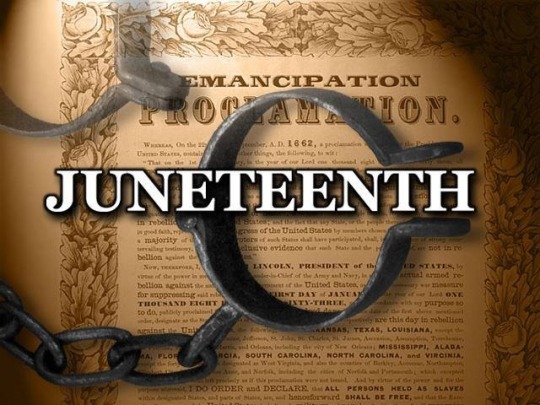



1921: The Tulsa Race Massacre
Goin' Back to T-Town
American Experience | PBS
By 1921, Tulsa's Black population had grown to almost 11,000, and the Greenwood community was booming. It was a time of prosperity for the residents. The neighborhood boasted 15 grocery stores, two Black movie houses, two Black newspapers, four drugstores, two Black public schools, a Black public library, four barbecue and chili parlors, and about 13 churches.
But it was also a dangerous time to be Black in America. Between 1917 and 1921, racial violence was rampant. In cities across the country, Blacks were being beaten, burned and lynched in alarming numbers.
No one, Black or white, was prepared for what happened on the night of May 31, 1921.
👇 📺 👇
youtube
*********
Footage of the Prosperous Greenwood and the Tulsa Massacre
Smithsonian Channel
A recently unearthed clip shows life in the Greenwood district of Tulsa and its neighboring communities, filmed between 1925 and 1928.
👇 📺 👇
youtube
3 notes
·
View notes
Photo

The PBS program American Experience, which documents interesting events and people from American history, recently ran an episode on the lie detector test — something that William Moulton Marston, the co-creator of Wonder Woman, falsely claimed to have invented. This webcomic by Kirstin Butler and Derrick Dent details Marston’s many endeavors over the years, from his attempts at creating a an early polygraph prototype to the female hero he helped create with artist H.G. Peters.
Read more
#american experience#pbs#wonder woman#William Moulton Marston#webcomics#sunday comics#kirstin butler#derrick dent#lie detector test
7 notes
·
View notes
Text
Inventions from the Sun Queen (careful with that moniker, lady, or Tennessee will ban you).
2 notes
·
View notes
Link
August 8, 2022
(The New York Times) – David McCullough, who was known to millions as an award-winning, best-selling author and an appealing television host and narrator with a rare gift for recreating the great events and characters of America’s past, died on Sunday at his home in Hingham, Mass., southeast of Boston. He was 89.
The death was confirmed by his daughter Dorie Lawson. No specific cause was given.
Mr. McCullough won Pulitzer Prizes for two presidential biographies, “Truman” (1992) and “John Adams” (2001). He received National Book Awards for “The Path Between the Seas: The Creation of the Panama Canal” (1977) and “Mornings on Horseback” (1981), about the young Theodore Roosevelt and his family.
Deep research and lively readability were hallmarks of his books, and so was their tendency to leap off the shelves. “Truman” topped The New York Times’s best-seller list for 43 weeks; “John Adams” was No. 1 in its first week and has since gone through dozens more printings.
His readers got a lot of work for their money: The Adams project took Mr. McCullough seven years, and “Truman” took him 10 (and when at last he showed his wife, Rosalee McCullough, the massive typescript, he said, she was amazed that it hadn’t taken longer). “The Great Bridge” (1972), his exhaustive account of the technology, personalities and politics involved in building the Brooklyn Bridge, was hailed as a monument in its own right. Yet there was hardly anything in his writing to suggest that he had ever staggered under the weight of his homework.
#David McCullough#John Adams#Truman#The Great Bridge#Mornings on Horseback#The Path Between the Seas#The Greater Journey: American in Paris#1776#The Civil War#Ken Burns#American Experience#PBS#New York Times#obituary#it's time for me to start reading Truman I think
4 notes
·
View notes
Video
The Donner Party (1992) | dir. Ric Burns
#the donner party#american experience#american experience the donner party#the donner party 1992#ric burns#documentary#*
43 notes
·
View notes
Text
Time to watch the news!!
*takes 20 psychic damage*
Perfect
3 notes
·
View notes
Text
“We Rock ‘n’ Rollers Will Resist—And We Will Triumph!
When the Smoke Cleared on Disco Demolition Night, Debate Over Its Cultural Meaning Began.
— October 26, 2023 | Kirstin Butler

Courtesy Chicago Sun-Times. Photo by Jack Lenahan
In the bright glare of Comiskey Park’s stadium lights, the rising column of smoke takes on a spectral quality. Riot police approach from the right to close in on the phantom, a smoldering pile of vinyl records, at center field. Debris litters the turf below; haze obscures the deck above. Disco Demolition Night, as captured here by a Chicago Sun-Times staff reporter, had turned into something far more out-of-control than a promotional stunt during a double header.
The July 12, 1979 event was the brainchild of a Chicago shock-jock-style radio personality, 24-year-old Steve Dahl, and Mike Veeck, Chicago White Sox promotions manager and son of the baseball club’s owner. Dahl had become a self-appointed anti-disco activist the previous Christmas Eve when he lost his job; his then-employer had switched overnight from rock to an all-disco playlist, following a nationwide trend that saw many radio stations jump on the disco hype train.
Dahl landed at WLUP 97.9, another rock station, where he developed a loyal following. He opened each morning’s broadcast with a ritual: According to a 2019 interview with NPR, Dahl would first cue up a disco song, and then after a harsh record scratch, play the sound of an explosion. He began hosting “Death to Disco” rallies at local Chicago nightclubs, and his band, Teenage Radiation, recorded a disco parody track (sample lyric: “Look at my hair, it's perfect/I saw Saturday Night Fever/Eighty-seven times”). “We have to destroy all disco, it’s our job,” Dahl told his listeners. He planned to make good on his destructive mission, literally, by blowing up a cache of disco records at a local mall. When Veeck learned of the idea, he offered Dahl a much larger venue for the pyrotechnics. The event would take place on one of Comiskey Park’s teen nights.
Dahl was tapping into an animus that had as much to do with anxiety over the zeitgeist as dislike of a musical genre. “It’s worth remembering now that in 1979, the economy and economic opportunities for people who don’t have a college education is actually shrinking,” Adam Green, a professor of African American history and cultural studies at the University of Chicago, told American Experience. “The city is changing because of things that have to do with the economy and politics; it’s not changing because of disco music. But if Steve Dahl says that he’s been screwed by disco, it gives permission to other people to say, ‘you know what? I’ve been screwed too.’”
youtube
Steve Dahl’s band recorded an anti-disco parody of Rod Stewart’s “Do Ya Think I’m Sexy.”
Disco had first emerged earlier in the decade, evolving out of funk, R&B and soul music; its innovators were Black, gay and Latino, and its milieu was the underground nightclub, where those marginalized groups found safe spaces to socialize. However, once record labels realized the genre’s commercial potential, disco music went mass market. And those now-mainstream clubs where disco was played (of which Studio 54 in New York City was the ne plus ultra) developed an elitist cachet that alienated the young, mostly white working class Chicagoans who listened to Dahl. With songs like “Y.M.C.A.,” “Night Fever” and “I Will Survive” topping the Billboard charts, the genre’s ascendance by the end of the Seventies was complete. It was also, then, a prime target for takedown.
These currents were all swirling in the air around the nighttime double header in mid-July, a showdown between the last-in-league Chicago White Sox and the Detroit Tigers. Veeck simply thought Disco Demolition Night would draw several thousand more fans during a losing season.
Dahl wore a combat helmet and fatigues to the park. His anti-disco army turned out en masse, drinking and growing increasingly rowdy as the innings went on. By the time Dahl rode out onto the field in a military Jeep after the first game, nearly 50,000 spectators were crammed into the park; an additional 10,000-plus were outside.
For reduced-price tickets to the park that night, many attendees brought records to be destroyed; all of the sacrificial vinyl filled a bin that was set down, ceremonially, in the middle of the field. Dahl got the crowd chanting “Disco Sucks,” a message matched by homemade banners hung from the stadium’s upper deck. “They’re not gonna shove it down our throats,” he yelled into a microphone. “We rock ‘n’ rollers will resist—and we will triumph!” The records were detonated, tearing a crater into the midfield sod. “That blowed up real good,” Dahl crowed, echoing the signature line that accompanied his on-air disco “explosions.” Triumphant, he got back in the Jeep and rode off the field—along with many of the ballpark security staff. That was when the true mayhem broke out.
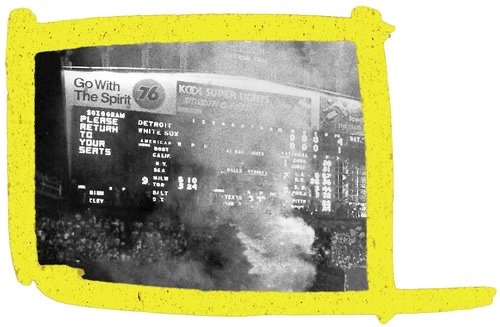
People started streaming onto the green by the thousands. They stole bases and tipped over a batting cage; they ripped up turf. They rushed both bullpens and began burning signs. Fights broke out. Veteran White Sox announcer Harry Caray tried to shift the tone by singing ‘Take Me Out to the Ballgame’ over the PA system. No one listened. A message on the scoreboard—PLEASE RETURN TO YOUR SEATS—pleaded, futilely, with the attendees still stoking fires. White Sox announcer Jimmy Piersall opined, “I hope they don’t let you people see what’s going on here at Comiskey Park; one of the saddest sights I’ve ever seen in a ballpark in my life.” Eventually the Chicago riot police arrived, some on horseback, and cleared the field.
Later, after the smoke cleared, and critics and commentators began evaluating the event, many would describe Disco Demolition as an opening salvo in the culture wars. What role racism and homophobia played in Dahl and his groupies’ rebellion remained up for debate. Even from today’s vantage point, a definitive interpretation of Disco Demolition is still murky. “If we seek a true memory,” Green said, “this is the meaning of the backlash against disco, then we're probably going to find ourselves in a situation where we never settle the argument. And I think that that’s the way of all major cultural transformations.”
#Youtube#American Experience#NOVA | PBS#Kirstin Butler#Rock ‘n’ Rollers#Triumph#Steve Dahl#Disco Demolition Night#Debate Over Cultural Meaning
2 notes
·
View notes
Text
i'm conducting an experiment. everyone who's from an english speaking country state your country, regional area and what you call the following images. i need to see something









#ex: united states > south > sodapop#please rb so more people see#american english#australian english#british english#canadian english#english#english language#dialects#accents#american accent#australian accent#british accent#canadian accent#english accent#america#australia#england#canada#those four are my target audience but all answers from around the world are welcome!!#tumblr#discourse#experiment
24K notes
·
View notes
Text
Watch "Nazi Town, USA | Full Documentary | AMERICAN EXPERIENCE | PBS" on YouTube
youtube
"History doesn't repeat so much as it rhymes."
0 notes
